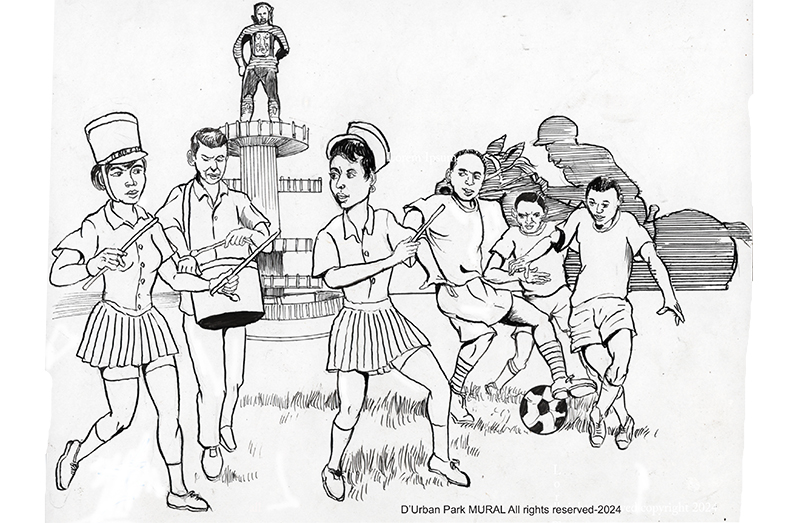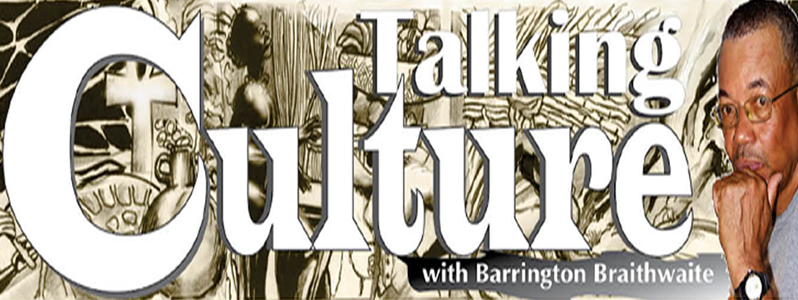THE records of our environment may hold the secrets of why we take offence to why familiar trees are chopped down, and an old house is torn apart and replaced by a not-so-graceful concrete structure. There is perhaps left a void that shaped the familiar aesthetic value that angrily rumbled within in witnessing an old, but crafted wooden building torn down. It’s a sensitivity, an awareness developed by elders telling tales about things not discussed by the voices that predominate the levels of local media today. Recently, a relative called from overseas with the need for a nostalgic conversation. We spoke from politics to art, to people and places, and how ‘GT’ was becoming a concrete jungle, even in places where the sewage could hardly upkeep the normal medium-housed populations. I promised to write about the old race course and its occupancies. I did this a long time ago, but never published it because the focus then was the expansion of ‘GT’ by the quest for labour from near and far.
 Thus, I will have to use the larger story. The initial race course was taken from lands that were described as the backlands of the then-town of Stabroek. This dangerously forested area had to be civilised for this desired race course. This task was addressed under the management of the British governor D’Urban in 1829. By then, the colony was in British hands and was renamed Georgetown. Clearing this area was addressed as was common among slaves, who most likely rented from plantations to do this dangerous labour. Their labour cost was paid to the plantation owners upon conclusion. The first races were held on November 3 – 4, 1829. At that time and after that, it was with an effort to get the nearby outlying villages eager to become part of Georgetown. Werk-en-Rust was incorporated and a new town (Leopold Street area) was created by manumitted Africans and poor whites. It was congested and occupied by shanties. A fire followed, destroying that area. Shanties were made, especially made of troolie and packing cases were forbidden. As the town expanded, the Town Council Ordinance in 1860 attempted to include the villages of Alberttown, the Queenstown ward, Wortmanville, Lodge, Kitty Village and Albouysown, but Alberttown rejected the idea. They wanted to be left alone. The D’ Urban race course continued progressively. It was the sport of the elites, but the support staff most likely came mainly from then Lodge Village.
Thus, I will have to use the larger story. The initial race course was taken from lands that were described as the backlands of the then-town of Stabroek. This dangerously forested area had to be civilised for this desired race course. This task was addressed under the management of the British governor D’Urban in 1829. By then, the colony was in British hands and was renamed Georgetown. Clearing this area was addressed as was common among slaves, who most likely rented from plantations to do this dangerous labour. Their labour cost was paid to the plantation owners upon conclusion. The first races were held on November 3 – 4, 1829. At that time and after that, it was with an effort to get the nearby outlying villages eager to become part of Georgetown. Werk-en-Rust was incorporated and a new town (Leopold Street area) was created by manumitted Africans and poor whites. It was congested and occupied by shanties. A fire followed, destroying that area. Shanties were made, especially made of troolie and packing cases were forbidden. As the town expanded, the Town Council Ordinance in 1860 attempted to include the villages of Alberttown, the Queenstown ward, Wortmanville, Lodge, Kitty Village and Albouysown, but Alberttown rejected the idea. They wanted to be left alone. The D’ Urban race course continued progressively. It was the sport of the elites, but the support staff most likely came mainly from then Lodge Village.
The modern race course or D’Urban Park, though with the decline of horse racing, eventually becoming ‘Home Stretch Avenue’, retained the lure of activities; some of us in the late 1960s and early 70s can recall from afar, local Woodstock groups (Hippies) yes, we had hippie wannabees, and D’Urban Park was their location. Into the mid-late 70s and early 80s, the location was occupied by football practice, which included the Republican team (Prison) and independent football teams, boxers, and other health-training groups. Then there were the Majorettes, accompanied most of the time by their drum support and the first vendors, amidst citizens cooling out around the National Hero Kofi’s monument, which embodies Phillip Moore’s masterpiece, our Republic monument. The race course was always tied to the then-old GT villages, now proper wards of Georgetown, through the accustomed cultural memory that passes on, to include the current joggers and driving classes, amidst new vendors from near and afar.


.jpg)











